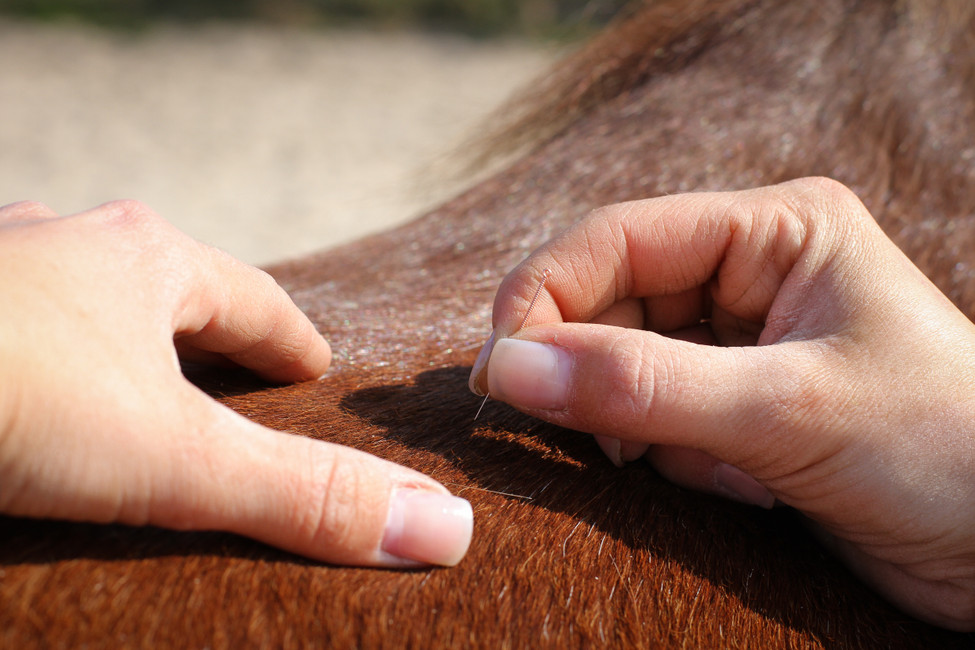
The Back Pain Breakdown.
Until fairly recently, the idea of horses dealing with back pain was somewhat of a folklore. Those who believed it was a reality were faced with ridicule and nonsensical looks from colleagues and friends.
With advancements in the field of veterinary medicine over the past 15 years, the evolution of the equine sports medicine specialty along with increasing acceptance of alternative medicine and therapies, the realization that equine athletes deal with back pain in much the same way that humans do is becoming evident.
Whether it’s a primary or secondary problem, dealing with a horse battling chronic back pain is…well…a pain. While there are plenty of times where the back is the primary problem, most often it seems these horses are dealing with other issues and the back is just a compensatory factor.
There are lots of options for working to improve your horse’s chronic back pain, many of which may seem like a waste of time but, coming from someone who has had the privilege to work with some of the country’s best equine sports medicine providers, I can tell you firsthand they’re not.
Let’s take a moment to break down and highlight a few of the current alternative therapies and options that you can do yourself to help manage your horse’s back pain.
(NOTE: Back pain may be an indicator of a larger, underlying issue and having your horse evaluated by your vet prior to incorporating these therapies is recommended.)
STRETCHES
This is probably the hardest thing for horse owners to do for their horses on a regular basis. We all love to ride and are in such a hurry to get on our horses, the thought of spending 10 minutes doing stretches before and after our rides seems daunting. The fact is, this is one of the best things you can do to build your horse’s muscle groups, stretch out areas of tension and improve flexibility. It’s worth the time!
This video gives an excellent breakdown of eight, easy stretches you can do with your horse. For back pain, pay special attention to numbers 4, 6, 7 and 8.
(TIP: From experience, number 8 can be done as a tail pull exercise which has worked easier for me. To adjust that stretch, simply stand at one side of your horse’s hip and gently pull the tail toward you. Wait for engagement of the flank and gluteal muscles and ask them to hold for a few seconds. As mentioned in the video, many times the horse will lean with this stretch – especially when they find out how good it feels!)
Typically these stretches can be done on a daily basis, starting with sets of 5 and building to sets of 10 over the course of a few weeks. While building your sets, you’ll also want to increase the time that your horse holds these stretches. Watch for muscle engagement after you ask for the stretch and get them to hold that engagement for 3-10 seconds (building over the first few weeks).
MASSAGE
If you’ve ever had a massage, you know how wonderful you feel afterward. Massage is proven to increase circulation, improve lymphatic drainage and function, loosen muscle fibers and release tension. Incorporating this therapy into your horse’s routine can be immensely helpful.
While there is great benefit to finding a local equine professional who can administer a therapeutic massage to your horse, there are some simple techniques you can use in the interim to keep your horse’s back relaxed.
This article gives an excellent breakdown of three techniques that are relatively easy for you to do on your own. The video below highlights a few of these techniques as well. You don’t have to have hands of steel or even use a lot of pressure to provide benefit to your horse; simple, light pressure and a basic understanding of fascial planes will help immensely.
Better still, incorporating a good liniment into your massage can be even more beneficial for your horse. The Sore No-More Performance Ultra line is actually research proven to improve back pain, on its own, by up to 90% in 30 days – imagine what it could do with the addition of massage!

